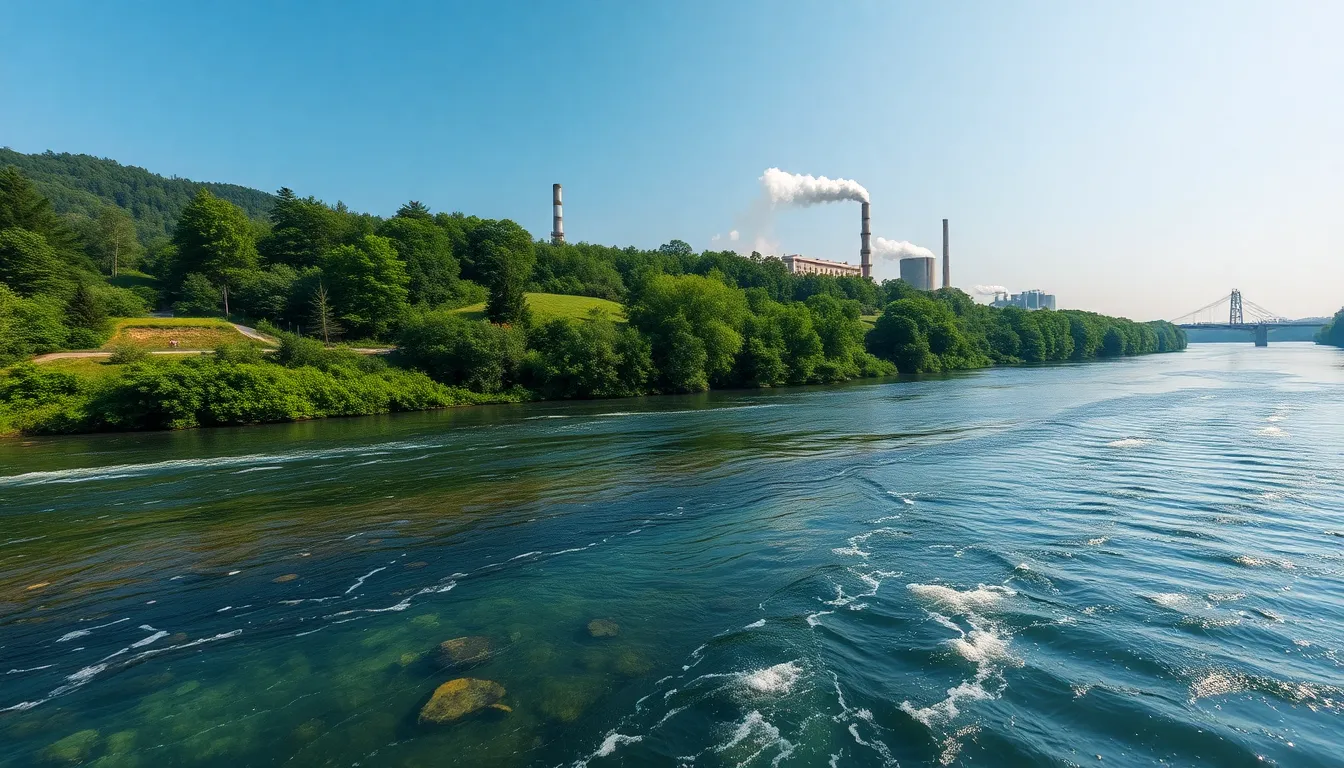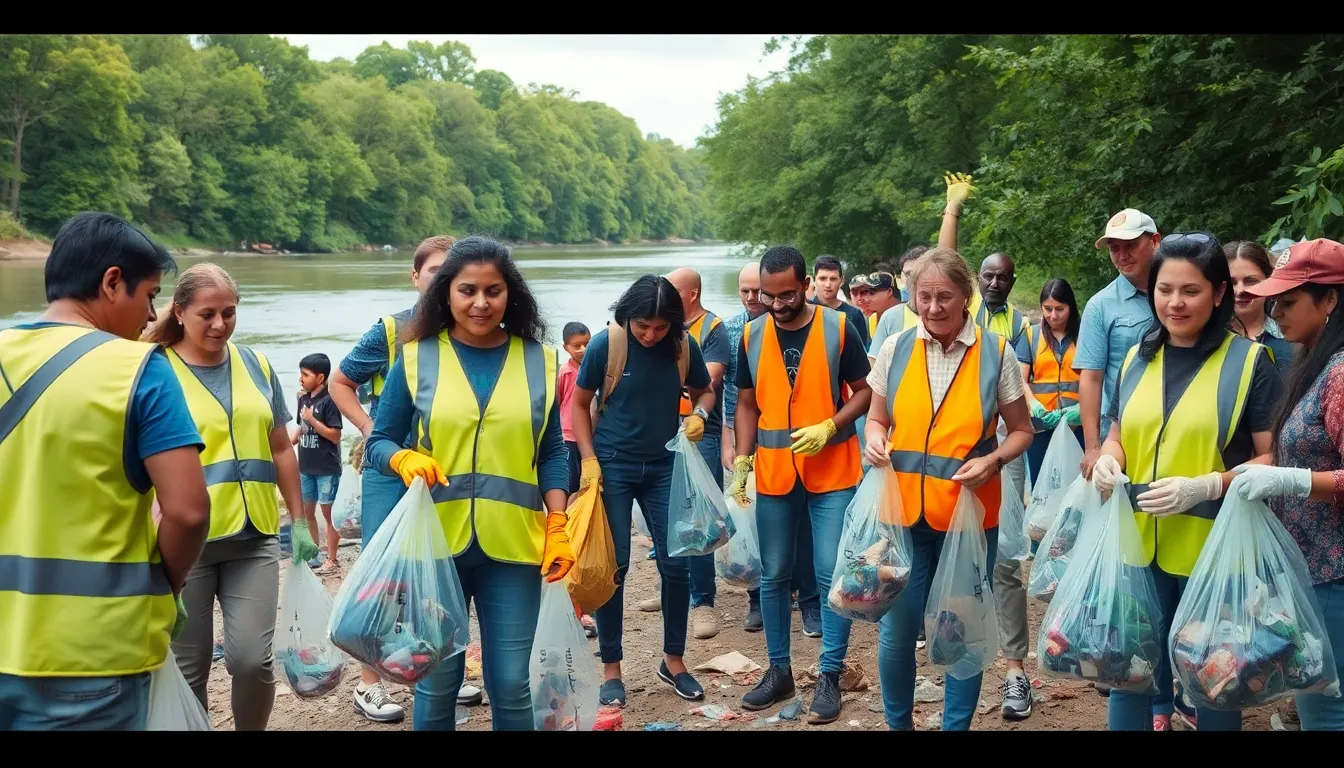Table of Contents
ToggleThe Supreme Court’s recent decisions on the Clean Water Act have significant implications for the management of raw sewage and water quality across the nation. As environmental issues increasingly take center stage, the intersection of legal frameworks and public health concerns becomes crucial. These rulings not only shape regulatory practices but also influence how communities address the challenges posed by aging infrastructure and pollution.
With raw sewage spilling into waterways, the stakes have never been higher. The legal interpretations surrounding the Clean Water Act can either bolster protections or leave gaps in enforcement, affecting ecosystems and public health alike. Understanding these developments is essential for anyone concerned about clean water and environmental justice in the United States.
Overview of the Clean Water Act
The Clean Water Act (CWA) serves as a cornerstone for water quality regulation in the United States. Established to restore and maintain the integrity of the nation’s waters, it aims to safeguard public health and the environment from pollution.
Historical Context
The Clean Water Act originated in 1948 as the Federal Water Pollution Control Act, focusing primarily on water quality standards. Amendments in 1972 significantly expanded its authority, establishing the framework for regulating point sources of pollution and granting the Environmental Protection Agency (EPA) the power to enforce compliance. The law underwent further revisions in 1977 and 1987, with the latter adding provisions for nonpoint source management and the National Pollutant Discharge Elimination System (NPDES). The CWA’s history reflects a growing recognition of the importance of clean water to public health and ecological systems.
Legislative Goals
The Clean Water Act’s primary goals encompass several key objectives:
- Eliminate Discharges: The CWA aims to eliminate pollutant discharges into navigable waters by setting standards and requiring permits.
- Water Quality Standards: The Act mandates states to establish water quality standards for their waters, promoting healthy ecosystems.
- Protect Wildlife: The legislation intends to protect fish, wildlife, and aquatic life by maintaining clean water sources essential for their survival.
- Infrastructure Improvements: The CWA emphasizes the necessity of upgrading wastewater treatment facilities and managing stormwater runoff to mitigate pollution.
- Public Participation: It encourages public involvement in water management decisions, ensuring that community interests and concerns are addressed.
These goals align with ongoing efforts to enhance water quality and protect public health in the face of legal and infrastructural challenges.
Supreme Court’s Role in Water Regulation

The Supreme Court plays a pivotal role in shaping water regulation through its interpretations of the Clean Water Act (CWA). Recent rulings significantly influence the management of raw sewage and the protection of water quality.
Key Supreme Court Cases
- Rapanos v. United States (2006)
Rapanos clarified the jurisdiction of the CWA over wetlands. The Court’s decision emphasized that federal authority applies to water bodies with a significant connection to navigable waters, affecting how agencies regulate non-navigable waters.
- Sackett v. EPA (2012)
Sackett addressed the EPA’s ability to enforce compliance orders without prior judicial review. The ruling supported landowners’ rights and highlighted the need for clarity in the CWA’s provisions.
- County of Maui v. Hawaii Wildlife Fund (2020)
This case determined if the CWA covers groundwater discharges that indirectly affect navigable waters. The Court ruled that permits are necessary when pollutants reach navigable waters through groundwater, emphasizing accountability for pollution contributors.
Impact on Environmental Policy
The Supreme Court’s decisions profoundly affect environmental policy by influencing how federal and state agencies enforce water regulations. Changes in interpretation can lead to decreased regulatory oversight or increased accountability for polluters. This ongoing legal evolution can reshape strategies for addressing sewage pollution, water quality standards, and public health initiatives, necessitating constant adaptation among stakeholders. Enhanced public awareness of these rulings remains essential for advocating effective water management practices and achieving long-term environmental goals.
Raw Sewage and Its Environmental Impact
Raw sewage poses significant health and environmental risks, threatening both human well-being and ecological integrity.
Health Risks
Raw sewage contains pathogens, heavy metals, and harmful chemicals, contributing to severe health concerns. Exposure can lead to waterborne diseases, including cholera and hepatitis A, which disproportionately affect vulnerable populations. Contaminated water sources facilitate the spread of infectious diseases, increasing hospital visits and healthcare costs. The Centers for Disease Control and Prevention (CDC) reports that millions of Americans experience illnesses related to contaminated water annually, underscoring the urgent need for effective sewage management.
Ecosystem Damage
Raw sewage disrupts aquatic ecosystems, leading to nutrient overloads and harmful algal blooms. Excess nutrients, such as nitrogen and phosphorus, stimulate algae growth, resulting in oxygen depletion and threatening aquatic life. Dead zones form in areas with low oxygen levels, causing fish and other organisms to die. The Environmental Protection Agency (EPA) estimates that nutrient pollution affects over 200,000 miles of rivers and streams in the U.S., illustrating the widespread ecological damage from untreated sewage. Additionally, the degradation of water quality impacts biodiversity, as many species rely on clean water for survival.
Recent Supreme Court Rulings
Recent Supreme Court decisions have critically influenced the Clean Water Act’s (CWA) enforcement, particularly concerning raw sewage management and water quality in the U.S. These rulings shape regulatory frameworks, impacting both public health and environmental integrity.
Case Analysis: Implications for Raw Sewage Regulation
Key cases such as Rapanos v. United States (2006) and County of Maui v. Hawaii Wildlife Fund (2020) significantly redefine CWA jurisdiction and enforcement. In Rapanos, the Court narrowed the definition of “waters of the United States,” limiting federal authority over certain water bodies. This ruling complicates regulatory oversight for raw sewage discharges, potentially increasing pollution risks. Meanwhile, the Maui decision clarified that groundwater discharges affecting navigable waters require permits, reinforcing the need for oversight in managing sewage contamination.
These rulings illustrate the ongoing tension between regulatory authority and environmental protection. They can either catalyze stronger enforcement against sewage pollution or create loopholes that hinder effective management. Compliance gaps may arise, negatively impacting communities reliant on clean water, especially in areas with aging infrastructure.
Future Legal Considerations
Future legal developments may further shape sewage regulation under the CWA. Ongoing litigation and potential appeals could address ambiguities in recently defined jurisdictional limits. As new cases arise, courts may reassess the application and scope of the CWA, impacting the degree of federal oversight.
Anticipated changes to legislation also play a role in future rulings. With increasing awareness of water quality issues and climate change, lawmakers may propose amendments or new regulations enhancing the CWA’s framework. Engaging stakeholders in advocacy efforts can drive reforms that prioritize public health and clean water access, ensuring robust protections against sewage pollution.
Public Response and Activism
Public response to the Supreme Court’s decisions on the Clean Water Act has manifested through various community initiatives and robust advocacy efforts. Citizens and organizations are increasingly mobilizing to raise awareness, demand action, and promote lasting change in raw sewage management.
Community Initiatives
Community initiatives play a vital role in combating the effects of raw sewage and preserving water quality. Local grassroots organizations frequently engage in educational campaigns aimed at informing residents about the health impacts of contaminated water. For instance, neighborhood clean-up days, often organized by residents, address local pollution sources while encouraging community engagement. Additionally, many municipalities implement watershed management programs that involve residents in monitoring water quality, reporting violations, and advocating for infrastructure improvements. Programs like these foster a sense of ownership over local water resources, empowering citizens to effect change.
Advocacy Groups
Advocacy groups actively work to influence policy changes regarding raw sewage management and clean water access. Nonprofit organizations, such as the Natural Resources Defense Council and the Clean Water Action organization, lobby for stricter regulations and advocate for increased funding for sewer infrastructure upgrades. They conduct research to highlight the public health risks associated with untreated sewage and mobilize public support through campaigns and petitions. Environmental justice organizations also focus on the disproportionate impact of sewage pollution on marginalized communities, advocating for equitable solutions. By collaborating with local governments and mobilizing public support, these groups aim to hold policymakers accountable and drive legislative reforms at state and federal levels.
The recent Supreme Court rulings on the Clean Water Act have profound implications for raw sewage management and water quality across the United States. These decisions not only redefine regulatory frameworks but also highlight the urgent need for improved infrastructure and public engagement. As communities grapple with the challenges posed by aging systems and pollution, the role of advocacy and grassroots initiatives becomes increasingly vital.
Staying informed about these legal developments is crucial for those who care about clean water and environmental justice. The ongoing dialogue between the courts, policymakers, and the public will shape the future of water management and ultimately determine the health of ecosystems and communities nationwide.








